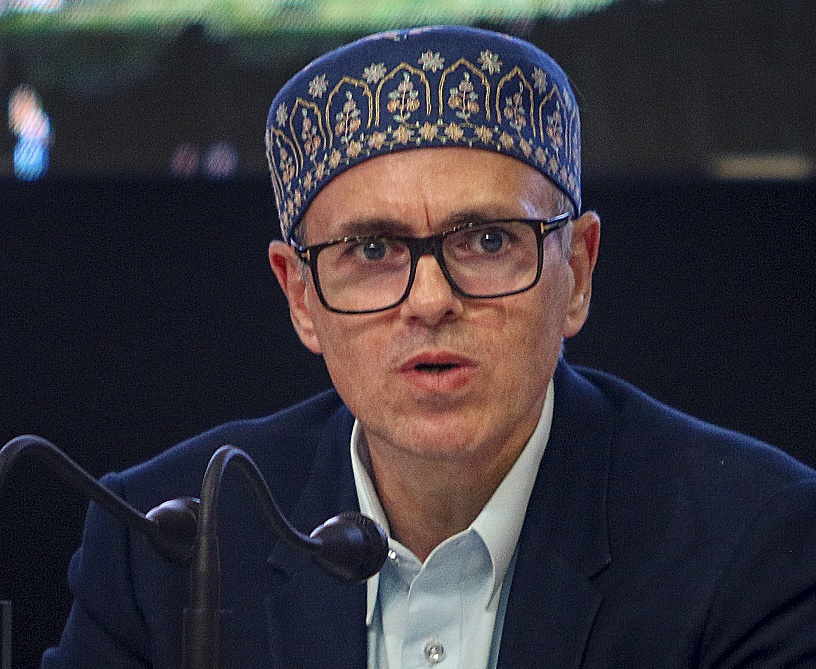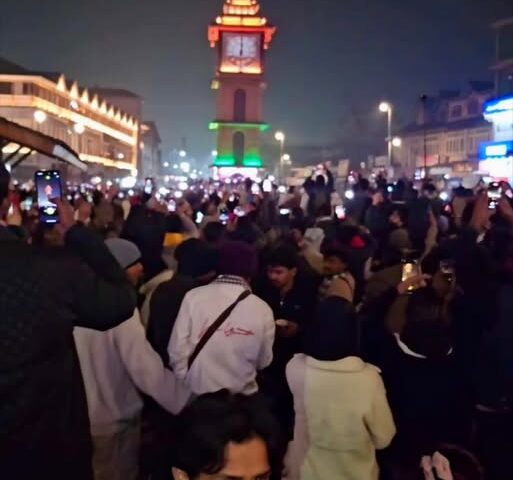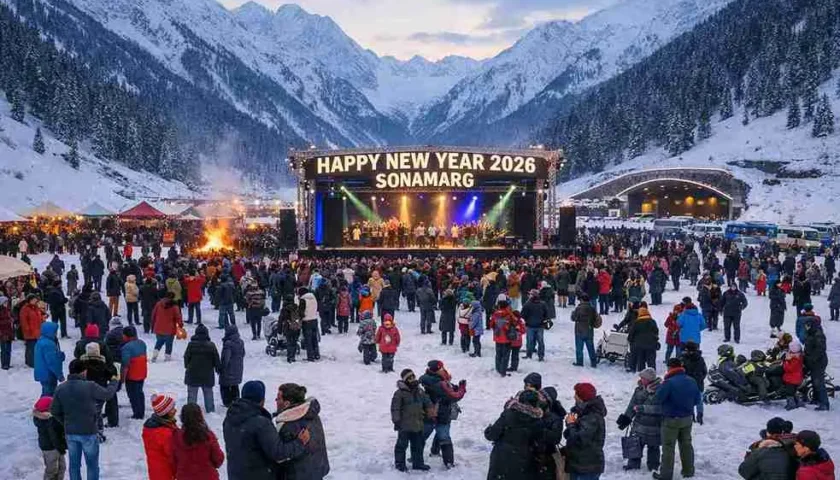First Time in Years: Helicopter Service for Amarnath Yatra Curtailed
Srinagar | June 17, 2025 – In a development that has stirred both public sentiment and political debate, Jammu and Kashmir Chief Minister Omar Abdullah has raised serious concerns over the sudden ban on helicopter services for the Amarnath Yatra 2025, stating that it sends a “wrong message” to the rest of the country. The restriction marks a significant departure from previous years, where air access to the cave shrine had become an essential mode of transport for pilgrims, especially the elderly and physically unwell.
Addressing reporters in Srinagar on Monday, CM Omar said:
“A wrong message is going to the rest of the country. I do not have the intelligence inputs on which this decision was made, but this is the first time in so many years that the helicopter service is not being allowed.”
His comments come at a time when the Union Territory administration, led by Lieutenant Governor Manoj Sinha, has already faced criticism over Yatra preparedness, dual governance, and coordination lapses between the civil administration and security agencies.
Amarnath Yatra: A National Symbol of Faith and Unity
The Amarnath Yatra, a 62-day annual pilgrimage to the holy cave shrine dedicated to Lord Shiva in the Himalayas of Kashmir, is not just a religious journey—it is a symbol of national unity, cultural diversity, and logistical coordination. Every year, lakhs of pilgrims from all over India participate in the trek to seek the blessings of the naturally formed ice ‘Shivling’ in the cave, situated at an altitude of 3,880 meters.
Helicopter services have, over the years, become a critical component of the Yatra infrastructure. They offer swift and safe transport for pilgrims, medical emergencies, and logistical supply of essentials to base camps like Baltal and Pahalgam. Their suspension this year has naturally raised alarms and triggered a broader debate.
Security vs Accessibility: A Delicate Balance
While security concerns are cited as the likely reason behind the restriction, CM Omar’s remarks underline a deeper discomfort with how such decisions are being communicated and implemented. The Chief Minister made it clear that he was not privy to the intelligence inputs or threat perceptions that may have led to the suspension.
However, he also warned that:
“This kind of decision, without public explanation or transparency, could have unintended consequences—it could deter pilgrims, cause economic setbacks, and send a message of fear rather than resilience.”
The statement echoes a growing sentiment in Kashmir that decisions impacting public faith and national integration must be handled with sensitivity and clarity.
Political Undercurrents: More Than a Travel Ban?
The restriction comes amid an ongoing political debate in Jammu and Kashmir over dual governance, diminished autonomy, and the long-standing demand for restoration of statehood. Many observers see the suspension of the helicopter service as not just a security precaution but a symptom of bureaucratic overreach and administrative opacity.
Omar Abdullah’s critique highlights the lack of coordination between the LG-led administration and the elected government, raising constitutional questions about who is ultimately responsible for such decisions and their implications on the ground.
In the current governance model, the LG oversees most administrative functions, while the elected CM holds limited powers—this duality has often resulted in conflicting statements, policy paralysis, and mixed messaging to the public.
Economic Fallout: Tourism and Local Livelihoods Hit
Beyond the religious and political concerns, the helicopter ban also threatens to impact Kashmir’s fragile tourism economy. Local businesses, pony operators, porters, hoteliers, and travel agencies who depend on the annual Yatra for seasonal income may suffer significant losses.
Travel agents have already reported booking cancellations and uncertainty from elderly pilgrims who had planned to use the helicopter service for health and age-related reasons. “Every year, helicopter bookings begin months in advance. This year, the sudden halt has led to confusion and cancellations,” said a tour operator from Pahalgam.
Additionally, local transporters and vendors who cater to helicopter disembarkation zones like Neelgrath and Panjtarni fear a drop in footfall, directly affecting their income.
Precedent and Perception: Is This the New Normal?
Observers note that this is the first time in recent history that such a sweeping restriction on air mobility for the Yatra has been enforced, even in previous years marked by high security alerts. In the past, even during turbulent periods like the Burhan Wani protests (2016) or Pulwama attack aftermath (2019), helicopter services continued, albeit under tight surveillance.
This change in approach suggests a possible shift in policy, where preemptive restrictions are being prioritized over logistical preparedness and public confidence-building. The fear is that such measures, if left unexplained, could become the new normal—normalizing curbs instead of strengthening institutional resilience.
A Test of Democratic Legitimacy and Trust
CM Omar’s remarks resonate beyond the Amarnath Yatra—they touch on larger questions of governance, public trust, and democratic accountability in Jammu and Kashmir. By expressing concern about the “wrong message” being sent out, he has effectively called for greater transparency and coordination in decisions that affect both sentiment and strategy.
In a Union Territory still transitioning from the aftershocks of Article 370 abrogation, public faith in governance mechanisms remains delicate. Top-down decisions without clear justification risk further alienating people, eroding confidence in institutions, and undermining the efforts to project Kashmir as safe and integrated.
Response from Administration Awaited
As of now, there has been no formal statement from the office of the Lieutenant Governor Manoj Sinha or the Shri Amarnath Shrine Board (SASB) clarifying the exact reasons behind the restriction. The silence has only fueled speculation and confusion.
Political parties, civil society, and business associations have urged the administration to come clean on the rationale behind the move, or at least announce a review mechanism based on evolving ground realities.
The Spirit of Yatra Must Endure
While safety is undeniably important—especially in a region with a complex security history—the spirit of the Amarnath Yatra is one of courage, resilience, and spiritual unity. Over the decades, despite militancy, weather challenges, and logistical hurdles, the Yatra has gone on, powered by faith, local cooperation, and national support.
CM Omar Abdullah’s remarks remind us that faith must not be stifled by fear, and safety measures must not come at the cost of accessibility and dignity.
Bottom-Line: A Call for Clarity and Coherence
The suspension of helicopter services for the Amarnath Yatra 2025 is more than a travel advisory—it is a mirror to the challenges of governance, perception management, and public communication in a politically sensitive region. CM Omar Abdullah’s warning about the “wrong message” reflects the urgency to balance security with transparency, and faith with facilitation.
As the Yatra continues amidst tight security and administrative caution, all eyes will remain on whether this restriction is reviewed or lifted, and how the administration plans to bridge the trust deficit—not just with pilgrims, but with the people of Jammu and Kashmir.




